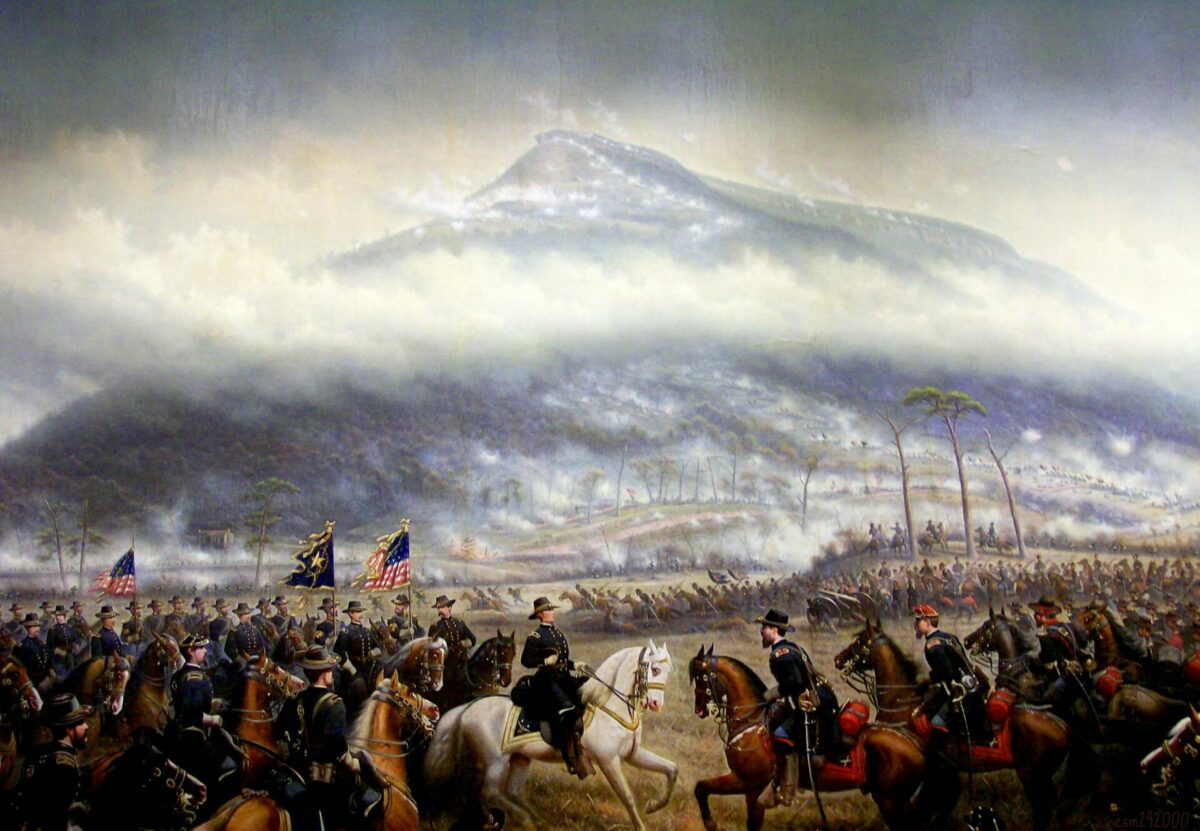In these latter days, we are all specialists. The rise of merchant trades, the industrial revolution, international shipping, and modernization have, in a series of reconfiguring shudders, made it more efficient for us to do fewer things but to do them better. As early as the 18th century, as the unyielding pressure of the market made it more and more necessary to specialize our work, physicians began noting the phenomenon of repetitive stress injuries–carpal tunnel syndrome, tendinitis, nerve damage, etc.–incurred by workers called on to perform some rote and repetitive motion over and over again for many hours each day.
The early days of machine industrialization catapulted these injuries into greater view. Early machines were clunky, dangerous, and miserable things to operate. These cast-iron beasts, in their implacable mechanical logic, crushed and strained and warped the bodies we threw against them. And no wonder. These machines were designed to carefully interface with products, and only carelessly or incidentally with bodies. In the information age, we in the post-industrial west often only have contact with the vestiges of these labor practices through viral social media videos. These spellbinding windows to what might as well be another world show us workers in the Global South working in dangerous conditions with incredible dexterity and precision to cut or assemble or build. As ever, it is the same motion over and over again, practiced so many thousands of times that it becomes a rhythm that takes over the whole body. Even watching it induces a trance-like state.
The inescapable conclusion we must make when witnessing the incredible proficiency on display is that specialization works. And it does work. The absolute slosh of money generated by the pressures toward specialization tells of it. But you can almost hear the bodies at the interface crying out at the repeated thump thump thump of the machine.
One of those tasks we have outsourced to specialists is war. We know much by now about acute post-traumatic stress. The casualties inflicted by modern war do not cease when the soldier returns home, as suicide outpaces combat deaths among U.S. soldiers. The cause and effect are often clear. Psychological trauma of this kind arises from an acute incident. Like a broken back or a crushed hand, the acute injury of the mind comes about almost like a workplace accident, a chance encounter with the (war) machine gone wrong. But what about repetitive stress, the steady drip-drip of psychological turmoil that accumulates over time, battering the same place again and again? Where and how might we see its outworkings?
Fighting has, for most of human history, been done by large masses of conscripts for whom fighting was only one of the things they did, and only when they had to. Those who were really good at it, or saw the lucrative potential of the skill and experience they gained in war, became mercenaries. These professional soldiers specialized in fighting, but they were the exception to the rule. When amateurs prosecuted war on behalf of larger powers, it was by all accounts boring, meaningless, and arbitrary. Fighting was concentrated to occasional massive, pitched battles. Soldiers were as often as not struck down by disease, accident, or infection as by actual battle. And when in battle, the killing (and your own death) were not so individual and prosaic as they are made out to be by ballad or movie.
In the United States, the transition to specialization was slow and halting. The build up to the Civil War found the United States in a logistical bind. There was a small federal army mustered, but it was orders of magnitude smaller than was needed for such a large conflict. In fact, each major war in which the United States took part yielded a further lurch toward specialization, toward larger and larger standing armies, and toward more instantaneous fighting capability.
The seemingly perpetual war on terror prosecuted since 9/11 until the recent drawdown in Afghanistan felt interminable because in a lot of ways we marked time by it. Regularly we were treated to ironic updates: a father and son fighting in the same war; children born well after the war began shouldering rifles and marching into the conflict; West Point graduates who were babies when the towers fell went off to die in the war. Declining enlistments also meant that many soldiers were called, again and again, back into the conflict they had already served too many tours in.
What has the specialization of war wrought in the bodies and minds of the soldiers we send to it? The prosecution of war has become a highly professional endeavor. The cost of training a single soldier for combat rises and rises. We invest so much in making the soldier the perfect fighter. And this shaping is not primarily physical but mental and emotional. Some aspects of training are called indoctrination for a reason. Its purpose is to take the differentiated human, and all of his quirks and foibles and second guesses, and smooth them out into a biological mechanism for the projection of lethal force. The psychological transformation required for a truly excellent fighter is daunting. It requires a very real death of human instinct and a commitment to unblinking lethality. To fail to complete this transformation is to fail to be the perfect organ of the modern military. This psychological reprogramming is also finding its way to American streets via popular police training seminars.
These psychological outworkings we might find are, like the fallout of repetitive stress injuries, spasmodic, the flinches of a psyche stooped or strained by the effort of keeping up with the inexorable turn of the war machine. And like repetitive stress injuries, they correlate with the consistent accumulation of stress. Turning again and again to the same soldiers for yet another deployment has the advantage of sending operators with experience back into the field, but at a certain cost.
This toll is especially grueling for the highest trained, whose deployments are more clandestine, training more intense, fighting tactics more numerous, targets more varied, operating environments more tense, and number of operations higher than any of their peers. Reports are rampant about drug abuse both among trainees, who take performance enhancers just to make it through their capriciously cruel courses, and among veteran operators, whose drugs of choice mix them a vicious miasma of violence, cruelty, and despair. What are we supposed to say when we see these psychological spasms–harrowing stories of broken men committing fratricide, seeking solace or death in a pharmacological witch’s brew, turning their aptitude for the careful planning of covert violence to inevitable criminal ends? If both preparing to become a cog in the war machine and easing the strain requires exotic illegal drugs, what does that say about the machine and the requirements it places on humans?
We might say that some people are just bad eggs, that there are enough soldiers that it is bound to be that those given the means and opportunity will do bad things. But read again the accounts of these men, like Billy Lavigne, who shot and killed his own best friend in front of both of their young daughters in what seems like a drug-fueled psychotic break from hell, and hear the despair and lament that drove him to take his own life as well and wonder, what if his mind had not been taken and smashed, again and again, against the intractable political problems our government saw fit to use his gun to solve? Was it the repetition, the grueling year after year, covert mission after covert mission, staring straight into hell every time and then returning to his family, only to be told he would have to go out and do it again?
To operate in such a theater of war is to abrogate by necessity any kind of shared or universal polity. The places to which soldiers are deployed are often failed states, where the will to power rules the streets and the nearest thing to the rule of law is their own organization’s rules of engagement. In this theater, everything is war and everyone is a threat. As professionals, it is a necessity of survival to learn to be able to shrug their shoulders at this un-civic space. It becomes their milieu; they grow accustomed to the low-social-trust, high-risk environment where the only thing secure is power, and the only power is military might. And if they are among the many highly-trained operators whose missions or rules of engagement are not quite regular even by military standards, then even the civic body to which they belong has made an exit to leave it and its confines. They have passed beyond the hazy veil of a society and into an underworld of fear, violence, and power.
It is no wonder that two motifs have arisen in the endlessly fascinating aesthetic pantheon of the operator: the Punisher skull and the thin blue line. The Punisher is a comic book antihero who, like so many of our comic fantasies, operates at home in this underworld outside of the rule of law. And the conceit of the thin blue line is that it is the veil, the seam between order and chaos, that without it the rules of the street–power and domination–may prevail. The police, too, have become a specialized industry characterized by overwork and, for some, the bleak endless grind of exposure to the worst that our broken world has to offer. The Punisher goes about his retributive justice with the kind of freedom that is no freedom at all but only the unbotheredness of impervious and violent power. It is this twin fantasy of justice and license to violence that operators often turn to in these interminable deployments.
Someone on a traveling visa to the underworld might, because of that blessedly temporary stay, come to appreciate the overworld all the more. But a permanent resident, on the other hand, might find a higher-trust society with thick civic norms to be a laughingstock, a hollow falsity, in comparison to the real and untrammeled world they left. And in a sense that world is real, a place where true-enough instincts for power and domination are unmitigated and unmediated by the kind of accreting stability and peace that accumulates from plenty, a lack of external political disruption and upheaval, stable institutions, wide families, shared religious practices, and high social trust.
Who is to blame them? Who among us, called by our country into hell so often, would not be tempted to swap in our minds, even partially, what is real for what is unreal? What does it matter to them that the deployments that came before them or the missions they are assigned themselves generated so many of the conditions that let the worst impulses in the human heart gain mastery? To them it is hell, and hell is real.
I am writing this all not just as a lament for the souls we have broken upon the wheels of our war machine but also to advance a philosophical proposal for how we might send our fellow humans into psychologically dangerous fields. So far I have mentioned the military and the police, but I have good reason to believe that several other fields: teaching, nursing, social work, prisons, and emergency medical services to name a few, are fields where we expect specialized practitioners to regularly confront emotionally and mentally challenging needs and to do so with a consistency of compassion, care, and attention to detail that can and certainly has led to burnout, poor execution, and poor outcomes. I think also of other professions where there is psychological danger of a different kind: many kinds of leadership or authority are psychologically challenging in that the assumption of power can corrode normal relations we have with our fellow citizens and cause problems in proportion to the influence and reach those roles give. The role of the operator in a theater of war is simply one of the starkest of such test cases.
What should we do about repetitive stress of the mind? You have probably guessed it already, but to summarize: to avoid repetitive stress injuries, don’t do the stressor so often and so relentlessly. To heal from a repetitive stress injury, simply stop doing that thing at all until you are fully healed, and then ease back into it only gradually.
Practically speaking, what does this mean? This is where such cultural critiques tend to break down, so I’ll begin by claiming that this proposal is a provocation, a polemic. But I’m only half-serious about that. We need to try to imagine a world that doesn’t destroy the humans who inhabit it. What does it look like to not make repetitive micro-damages to the minds and souls of our armed forces, our cops, our bankers and social workers and McKinsey consultants and nurses?
It first involves de-specialization. Advances in training have so sharpened the point of our military that it has made it an implement with only one purpose. These ever-increasing specializations have also had a feedback effect on recruitment. If the prototypical operator is quiet, disciplined, subordinated to the exigencies of the mission, then anyone who fits that profile will over the course of his training become less useful for any other kind of productive pursuit. It is no wonder that there is a crisis of vocation for so many veterans returning from war. While many of the skills are portable, the attenuation of roles and venues available and the dominating implicit narrative of the operator softly foreclose those other opportunities.
De-specialization means that soldiers will be less lethal, less effective, less able to handle the physical and mental stress of repeated deployments and ever-more-difficult missions, less willing to go and do the distasteful work we have charged them to do. It means a very real sacrifice in effectiveness. There is no avoiding this consequence. These industries specialized over time because it made them more effective at what they do. This is a significant and unpalatable political sacrifice.
It will certainly also require that we apply lay, volunteer, and part-time labor to these psychologically stressing tasks. If underwriting insurance, not killing people, is your main job, the necessity of war, when it arises, may not have the same effect as when the totality of the role itself winds its way into your mind, your meaning, your vocational purpose. Indeed, this is in concept what the National Guard does, a part-time commitment for professionals in other disciplines to go to war when called to it. Assuming that the amount of work to do remains equal, reducing strain on professional soldiers requires a concomitant increase in the use of part-time warriors.
Of course, it goes without saying that part-time warfighting also makes a military less effective, less able to mobilize, and less threatening to faraway enemies. If I am in the upper echelon of the Taliban, I’m much less likely to be worried about a bullet in the head if it’s Joe from the sales department behind the rifle, not Chris Kyle. In times of war, this is yet another very real and unavoidable reduction in the effectiveness of an organization.
Perhaps another way of putting this is that it raises the bar for the justification of a military mission. If the point isn’t so sharp anymore, we’d better be sure to throw the spear at just the right target. If we cannot unwind diplomatic snafus so easily with the over-application of covert operators, we will be more likely to turn to difficult and less violent means. If the standing capability for war of our nation is diminished, we will find fewer and fewer opportunities to throw them into a fray of opportunity. If the movies are to be believed, perhaps a president will pause to reflect if, when they articulate their worries about the prudence of an act of war, the Joint Chiefs don’t reply with the cliche “it’s alright, Sir, they’re trained for it. They’re professionals.” The thought of sending citizens–civilians!–to war raises the threshold for when such a war is worth the cost.
But what it may offer in return is greater national and civic buy-in for war when it truly becomes necessary. If a nation can credibly articulate the need for a military action and mobilize a citizen soldiery, the act of warfighting is ennobled by the fact that it is waged by Joe from sales, not from essentially an internal mercenary force. More importantly, it makes the psychological and moral burdens carried by society more equally distributed and makes those burdens part of a civic inheritance. Some will point out that the war burden is just too much for a society as a whole to carry. But of course, if a particular war truly is an undue burden on a civic group, it perhaps should not undertake it. If a war has a truly just cause, the will to prosecute tends to follow.
This concept is naturally applicable to other professions I nominated as overspecialized and overstrained earlier. What transformations could be wrought upon a nation if the task of educating, healing, caring for, protecting, and leading people felt less like a hyper-specialization to be undertaken by professionals and more like a shared civic responsibility? We hear regularly of initiatives to make the health professions more community-centric, focused on in-home care, available in smaller neighborhood clinics, but these rarely consider how to train the army of staff such a nationwide effort might require. We pine away for the days of community policing, of neighborhoods that can take care of themselves, we wring our hands about cities policed by professional outsiders and commuters, but we don’t think about what it would take from a training and staffing perspective to make that possible. We worry about an acute shortage of teachers and paucity of social workers for the real needs our society has, but we require an immense amount of training before licensing people to fill these roles. These psychological and moral burdens: of health, of safety, of war, of leadership, are ones which ought to be borne by the wider society as a shared civic commitment in order to be sustainably maintained.
We are so obsessed with efficiency and effectiveness that we see these machines–war, education, health–and can only see what cogs and gears are missing. We then fashion pieces to fit out of the clay of our fellow humans, tune their functioning for efficiency with ever-more-precise training regimens, not realizing that the perfect piece, could it be found to fit, would not be a human at all but a machine too. We are learning the hard way that we are not machines. We are softer and squishier, more prone to being stooped and warped and bent, than the forged steel we would need to make these mechanisms truly perfect. In fact, it is a version of this theory that animates the sorta-tongue-in-cheek proponents of fully automated luxury communism. They see these mechanisms as necessary components of abundance, of the abolition of scarcity, but see (rightly, I think) a legacy of exploitation and alienation in our attempts to force soft, squishy humans into roles that only mechanical components can fulfill. I myself am more inclined to believe that God meant every word of His curse of Adam in Genesis 3:17-19, but that the common grace afforded us all gives us, through an ordered approach to the human machinery fashioned for this civic work, glimmers of a kingdom to come that abolishes death.
We can approach burnout, trauma, mental illness, substance abuse, and unhealthy coping mechanisms in the same way that we treat the pain workers feel from repetitive stress. Ned Ludd might take a hammer to the machine of war or of education or of policing. By comparison, my proposal is more mild: perhaps we should limit hours, distribute strain more broadly, and make the operation of this machinery a civic birthright, not a goal to be attained by grueling professional training. We have wrought a strange and fantastically complicated world for ourselves. But we can know how well we are interfacing with it by its fruits: a terrifyingly effective machinery, but spasms of pain in our arms and backs. These pains are not normal, they are not ordinary, and we would do well to examine how we might better operate not just the war machine, but all the wonders our hands have fashioned.
Painting by James Walker, 1874 via Flickr







2 comments
Martin
This is an incredibly eye-opening essay, one of the most insightful I have read on this site (or elsewhere). I wonder though if the repetitive stress of combat is basically the *incessant* stress of danger, rather than specific physical movements. For example, we take precautions by putting on our seat belt when we drive but the repetition of that isn’t a major cause of injury. I doubt loading a gun is either.
I think the idea of rolling back specialization by diffusing responsibility is good, but it would mean reorganizing various care, education, etc. jobs with a fuller hierarchy of skill and responsibility — maybe just visiting and talking to confined people would be acceptable as lowest level, though I suspect the hierarchy would put limits on what topics you could discuss about a person’s infirmity, in order to prevent skepticism about the upper echelon of experts treating the person.
There also are serious obstacles in terms of entrenched profit-making. Training a team of special ops people is way more expensive than an infantry regiment, but you only need 1% of the people, which also means you could have an abundance of teams if you downsized total military deployment (which you say is happening anyway, with consequent re-deployment at stressful frequencies). Of course, down-sizing means fancier weapons but only 1% of the volume, thus fewer sales.
In medical treatment, “practices” have lost nearly all autonomy to “managers” and insurance companies. I read that hospitals are replacing anesthesiologist MDs with anesthesiologist RNs due to lower salary and lower insurance costs. Apparently, approval was voted by a national medical organization. Trimming the hierarchy at the top might not always be a good thing.
Brian
There’s a school of thought that the rise of PTSD is not so much due to the traumas of war but the isolation and atomization of society that they have to return to. I’m no expert to know for sure, but it makes sense, there’s very little in the way of “community” for veterans anymore, or for non-veterans for that matter.
We’re not going to move to non-specialized fighters, we’re going to move to robot fighters, which may reduce PTSD cases but will certainly remove the need for the War Machine to need to care much for public opinion.
(Speaking of which, is it not remarkable that the previous president ordered the military to withdraw from Syria, a place where Congress never authorized them to be, and the military brass refused, quite openly, even bragging about it? Quite incredible. And yet essentially no one cares even slightly…)
Comments are closed.